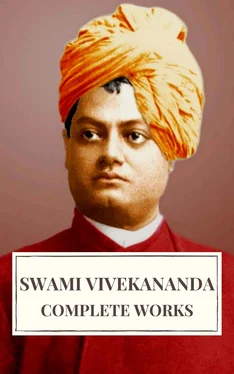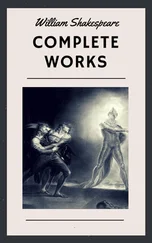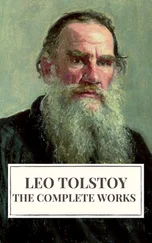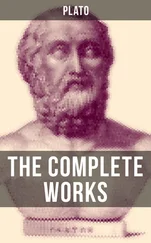The most obvious manifestation of this Prana in the human body is the motion of the lungs. If that stops, as a rule all the other manifestations of force in the body will immediately stop. But there are persons who can train themselves in such a manner that the body will live on, even when this motion has stopped. There are some persons who can bury themselves for days, and yet live without breathing. To reach the subtle we must take the help of the grosser, and so, slowly travel towards the most subtle until we gain our point. Pranayama really means controlling this motion of the lungs and this motion is associated with the breath. Not that breath is producing it; on the contrary it is producing breath. This motion draws in the air by pump action. The Prana is moving the lungs, the movement of the lungs draws in the air. So Pranayama is not breathing, but controlling that muscular power which moves the lungs. That muscular power which goes out through the nerves to the muscles and from them to the lungs, making them move in a certain manner, is the Prana, which we have to control in the practice of Pranayama. When the Prana has become controlled, then we shall immediately find that all the other actions of the Prana in the body will slowly come under control. I myself have seen men who have controlled almost every muscle of the body; and why not? If I have control over certain muscles, why not over every muscle and nerve of the body? What impossibility is there? At present the control is lost, and the motion has become automatic. We cannot move our ears at will, but we know that animals can. We have not that power because we do not exercise it. This is what is called atavism.
Again, we know that motion which has become latent can be brought back to manifestation. By hard work and practice certain motions of the body which are most dormant can be brought back under perfect control. Reasoning thus we find there is no impossibility, but, on the other hand. every probability that each part of the body can be brought under perfect control. This the Yogi does through Pranayama. Perhaps some of you have read that in Pranayama, when drawing in the breath, you must fill your whole body with Prana. In the English translations Prana is given as breath, and you are inclined to ask how that is to be done. The fault is with the translator. Every part of the body can be filled with Prana, this vital force, and when you are able to do that, you can control the whole body. All the sickness and misery felt in the body will be perfectly controlled; not only so, you will be able to control another’s body. Everything is infectious in this world, good or bad. If your body be in a certain state of tension, it will have a tendency to produce the same tension in others. If you are strong and healthy, those that live near you will also have the tendency to become strong and healthy, but if you are sick and weak, those around you will have the tendency to become the same. In the case of one man trying to heal another, the first idea is simply transferring his own health to the other. This is the primitive sort of healing. Consciously or unconsciously, health can be transmitted. A very strong man, living with a weak man, will make him a little stronger, whether he knows it or not. When consciously done, it becomes quicker and better in its action. Next come those cases in which a man may not be very healthy himself, yet we know that he can bring health to another. The first man, in such a case, has a little more control over the Prana, and can rouse, for the time being, his Prana, as it were, to a certain state of vibration, and transmit it to another person.
There have been cases where this process has been carried on at a distance, but in reality there is no distance in the sense of a break. Where is the distance that has a break? Is there any break between you and the sun? It is a continuous mass of matter, the sun being one part, and you another. Is there a break between one part of a river and another? Then why cannot any force travel? There is no reason against it. Cases of healing from a distance are perfectly true. The Prana can be transmitted to a very great distance; but to one genuine case, there are hundreds of frauds. This process of healing is not so easy as it is thought to be. In the most ordinary cases of such healing you will find that the healers simply take advantage of the naturally healthy state of the human body. An allopath comes and treats cholera patients, and gives them his medicines. The homoeopath comes and gives his medicines, and cures perhaps more than the allopath does, because the homoeopath does not disturb his patients, but allows nature to deal with them. The Faith-healer cures more still, because he brings the strength of his mind to bear, and rouses, through faith, the dormant Prana of the patient.
There is a mistake constantly made by Faith-healers: they think that faith directly heals a man. But faith alone does not cover all the ground. There are diseases where the worst symptoms are that the patient never thinks that he has that disease. That tremendous faith of the patient is itself one symptom of the disease, and usually indicates that he will die quickly. In such cases the principle that faith cures does not apply. If it were faith alone that cured, these patients also would be cured. It is by the Prana that real curing comes. The pure man, who has controlled the Prana, has the power of bringing it into a certain state of vibration, which can be conveyed to others, arousing in them a similar vibration. You see that in everyday actions. I am talking to you. What am I trying to do? I am, so to say, bringing my mind to a certain state of vibration, and the more I succeed in bringing it to that state, the more you will be affected by what I say. All of you know that the day I am more enthusiastic, the more you enjoy the lecture; and when I am less enthusiastic, you feel lack of interest.
The gigantic will-powers of the world, the world-movers, can bring their Prana into a high state of vibration, and it is so great and powerful that it catches others in a moment, and thousands are drawn towards them, and half the world think as they do. Great prophets of the world had the most wonderful control of the Prana, which gave them tremendous will-power; they had brought their Prana to the highest state of motion, and this is what gave them power to sway the world. All manifestations of power arise from this control. Men may not know the secret, but this is the one explanation. Sometimes in your own body the supply of Prana gravitates more or less to one part; the balance is disturbed, and when the balance of Prana is disturbed, what we call disease is produced. To take away the superfluous Prana, or to supply the Prana that is wanting, will be curing the disease. That again is Pranayama — to learn when there is more or less Prana in one part of the body than there should be. The feelings will become so subtle that the mind will feel that there is less Prana in the toe or the finger than there should be, and will possess the power to supply it. These are among the various functions of Pranayama. They have to be learned slowly and gradually, and as you see, the whole scope of Raja-Yoga is really to teach the control and direction in different planes of the Prana. When a man has concentrated his energies, he masters the Prana that is in his body. When a man is meditating, he is also concentrating the Prana.
In an ocean there are huge waves, like mountains, then smaller waves, and still smaller, down to little bubbles, but back of all these is the infinite ocean. The bubble is connected with the infinite ocean at one end, and the huge wave at the other end. So, one may be a gigantic man, and another a little bubble, but each is connected with that infinite ocean of energy, which is the common birthright of every animal that exists. Wherever there is life, the storehouse of infinite energy is behind it. Starting as some fungus, some very minute, microscopic bubble, and all the time drawing from that infinite store-house of energy, a form is changed slowly and steadily until in course of time it becomes a plant, then an animal, then man, ultimately God. This is attained through millions of aeons, but what is time? An increase of speed, an increase of struggle, is able to bridge the gulf of time. That which naturally takes a long time to accomplish can be shortened by the intensity of the action, says the Yogi. A man may go on slowly drawing in this energy from the infinite mass that exists in the universe, and, perhaps, he will require a hundred thousand years to become a Deva, and then, perhaps, five hundred thousand years to become still higher, and, perhaps, five millions of years to become perfect. Given rapid growth, the time will be lessened. Why is it not possible, with sufficient effort, to reach this very perfection in six months or six years? There is no limit. Reason shows that. If an engine, with a certain amount of coal, runs two miles an hour, it will run the distance in less time with a greater supply of coal. Similarly, why shall not the soul, by intensifying its action, attain perfection in this very life? All beings will at last attain to that goal, we know. But who cares to wait all these millions of aeons? Why not reach it immediately, in this body even, in this human form? Why shall I not get that infinite knowledge, infinite power, now?
Читать дальше












